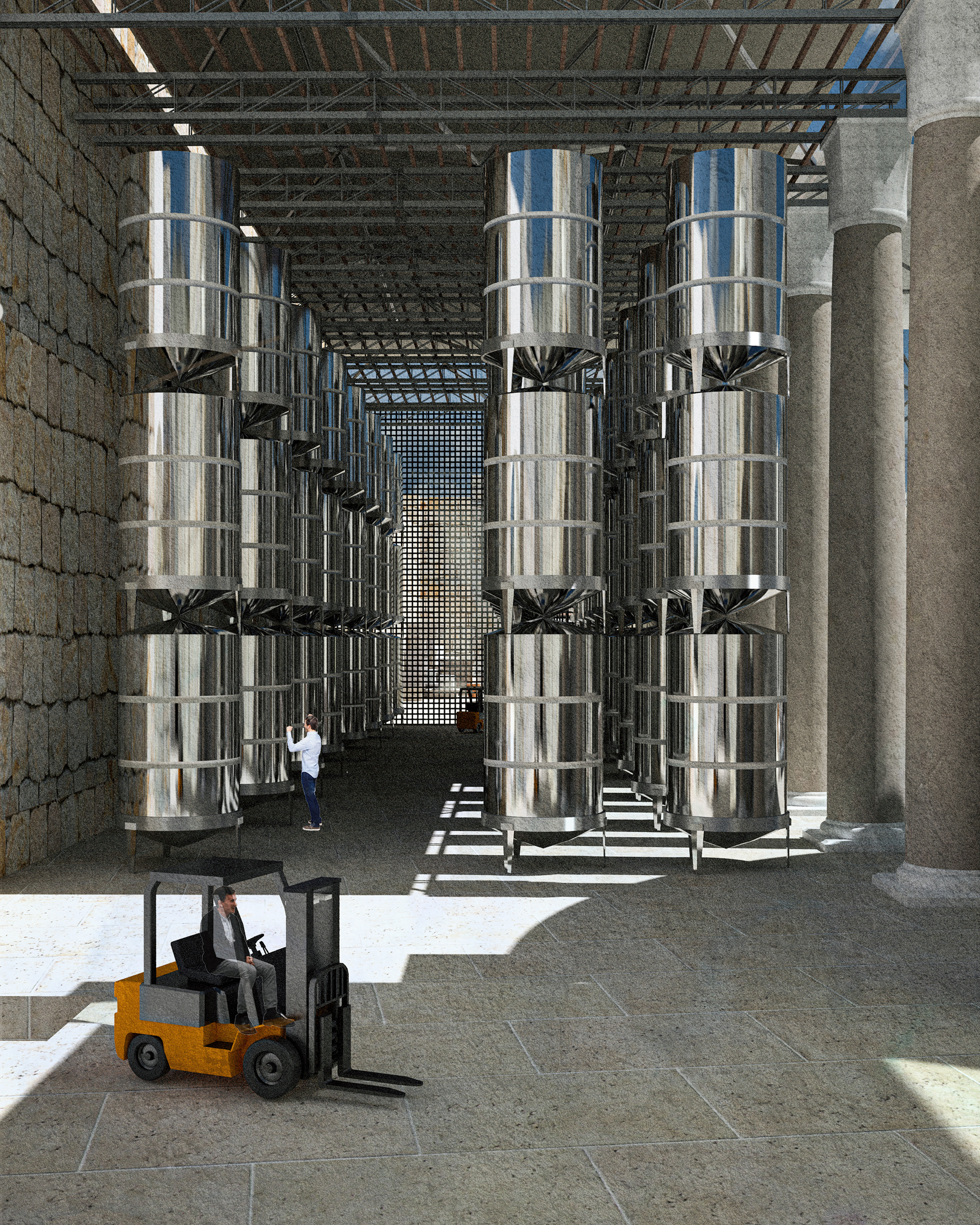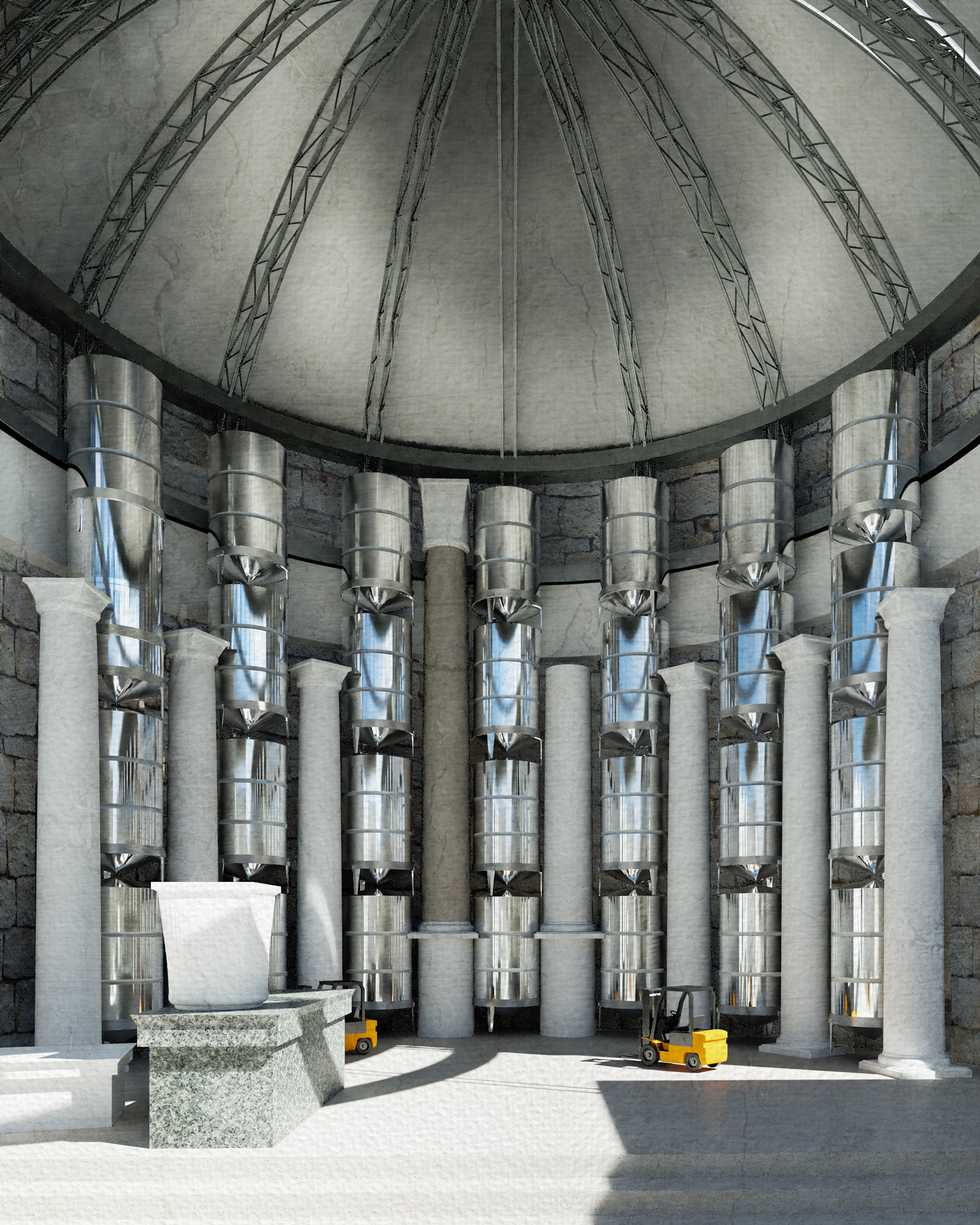OPTION Studio : Design IX
Professor : Aleksandr Mergold
SUMMER 2020
Erected in Year AD under the patronage of the Roman emperor Septimus Severus, the Leptis Magna basilica and forum became some of the finest examples of Roman architecture as well as of notable local constructions. The buildings were largely funded by export of olive oil to the rest of the Empire; Tripolitania at the time was the primary producer of olive oil in the world, which resulted in the area surpassing its colonial status in favor of civitas libera et immunis, or self-governed community with only nominal political dependence from Rome. Farmlands surrounding the city provided the raw material, and a traditional methodology of cold-pressing oil was used at a large scale.
As a post-war Libya will be recovering from the tragic losses of civil unrest, an economic push will be needed to guide the country back onto the world stage. As the search for sustainable object of international trade arises, a strong contestant emerges: by returning to the ancient local tradition of farming olives and pressing oil, north of Libya is not only re-entering the market it has once dominated in a foolproof fashion, it is also honoring and commemorating millennia-long practice that links the area to its heritage.
An olive oil factory and museum will constitute the resurfacing trade’s focal point in architectural terms. The Severan basilica and forum were chosen as an intervention site not only because of their formal suitability to the demands of the program, but also because, as the past’s most public locales in the city, they imply a degree of openness to the public eye. A prolonged factory building is positioned in the Forum, with easy car access for delivery trucks and local forklifts. Inside the basilica, two large storage areas contain large oil vats, where oil sits for up to four months before bottling. A visitor center, tasting rooms, and a passageway lined with potted olive trees constitute the “served” spaces for tourists. A bottling and bottle storage facility, adjacent to the west entrance into the basilica, allows for easy access to trucks that later transport crates if bottles to the port for shipping. At last, an administrative building, restroom area, and mechanical building find themselves in _— between basilica and forum.
EXPLODED ISOMETRIC [EXISTING RUINS IN BLACK, INTERVENTION IN RED]
ISOMETRIC
EXHIBIT
COVER + PROTECT


OLIVE OIL STORAGE IN BASILICA NAVE AND APSE
FORUM. OLIVE OIL PRODUCTION FACILITY